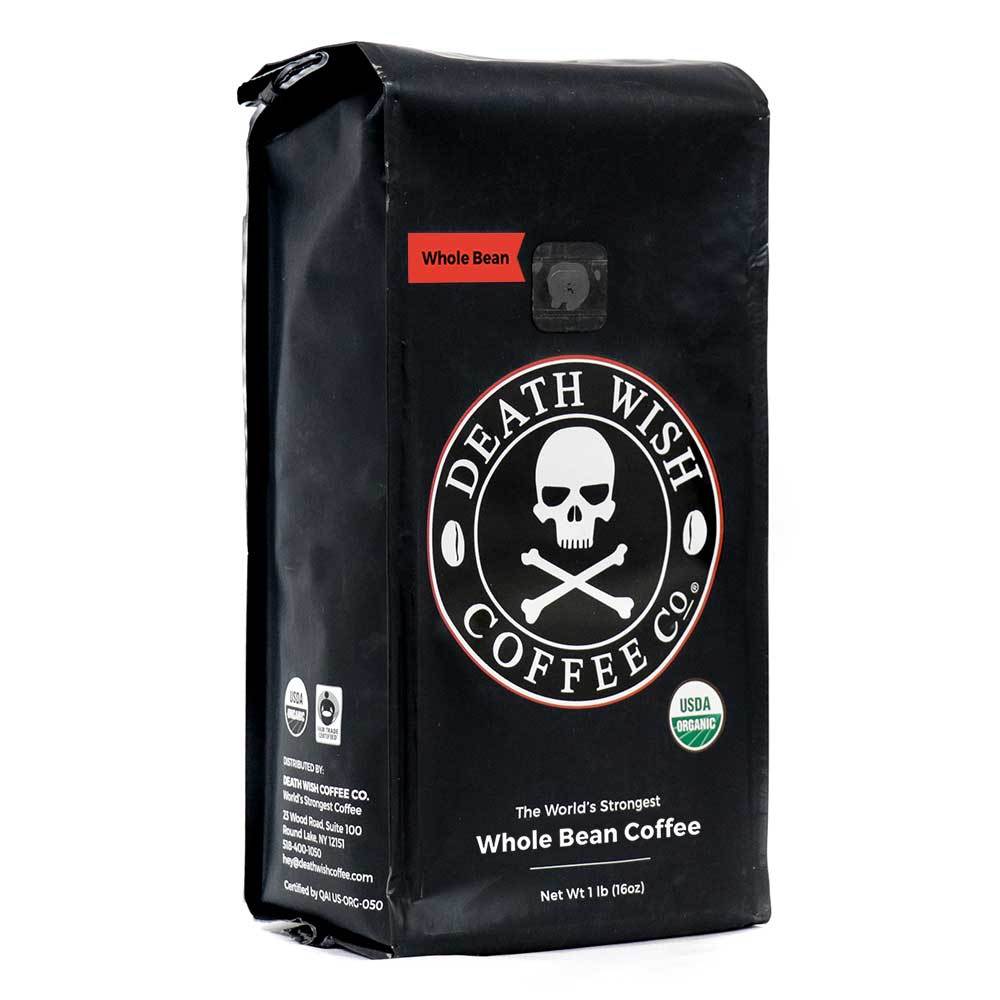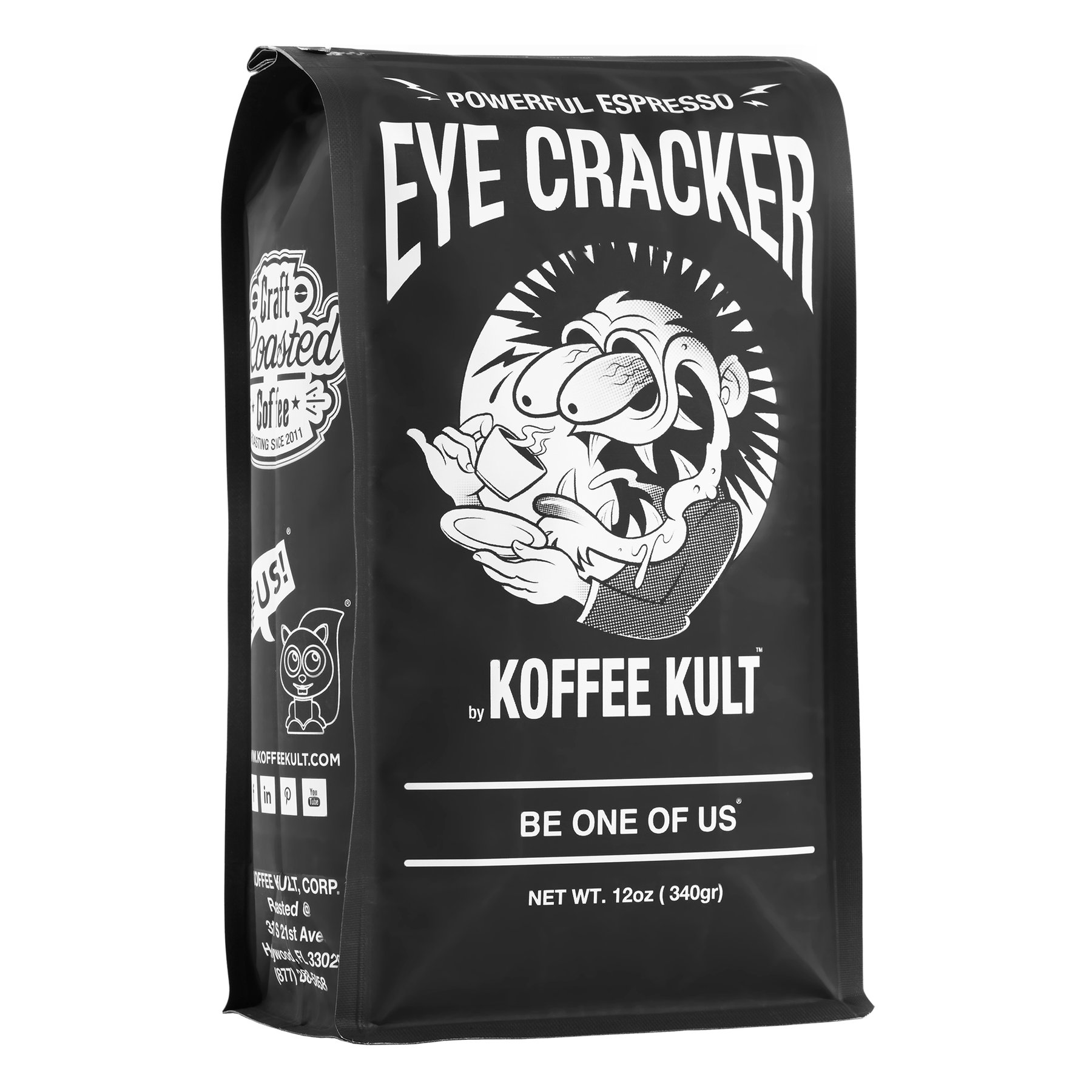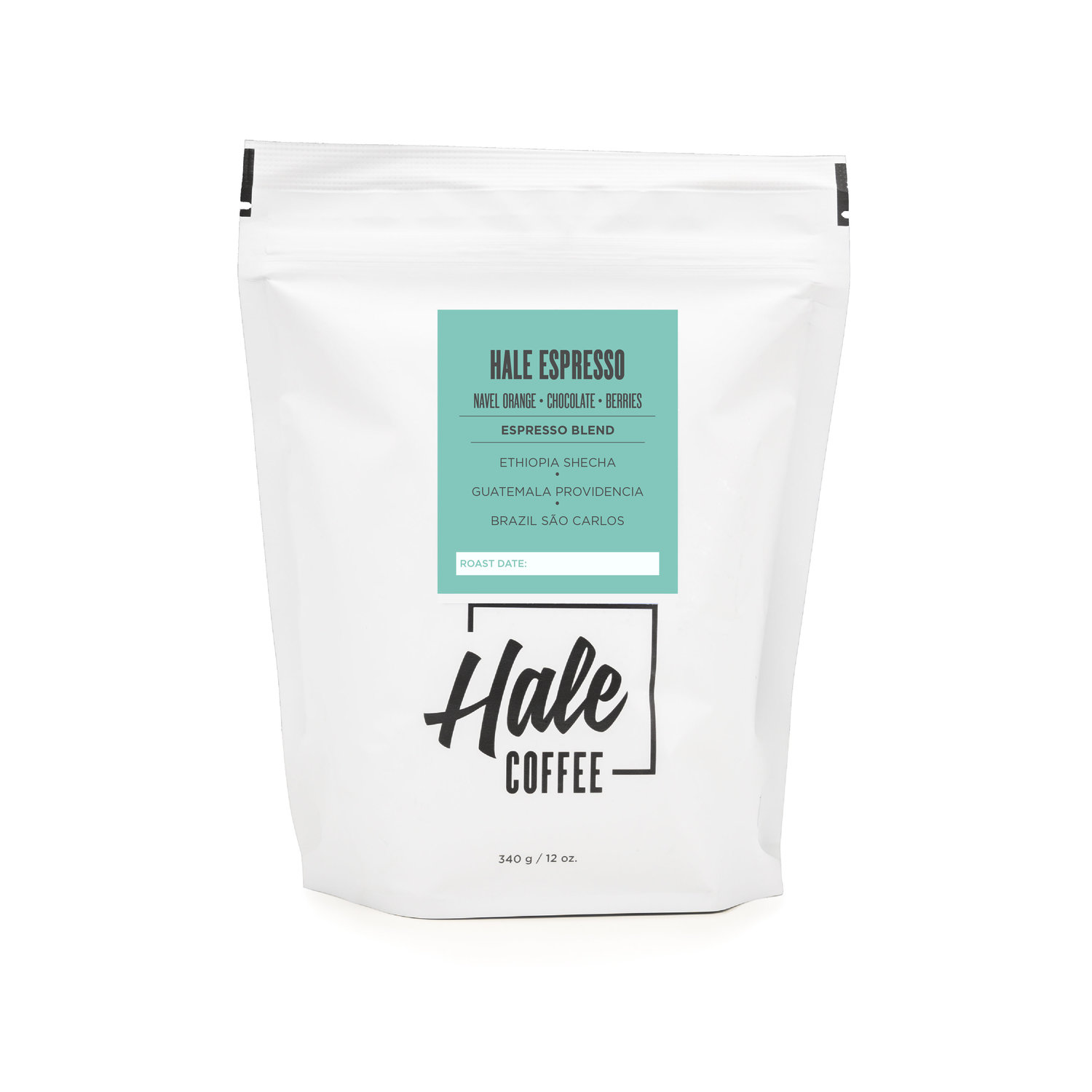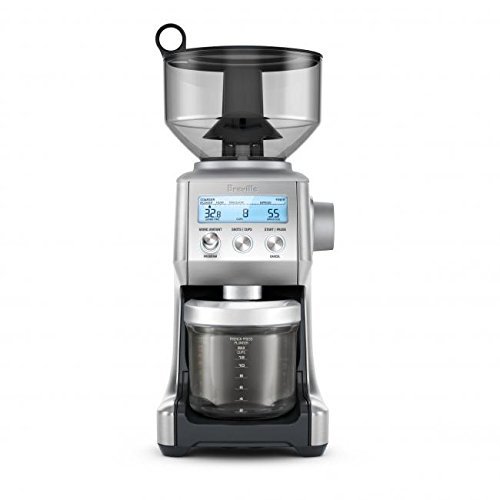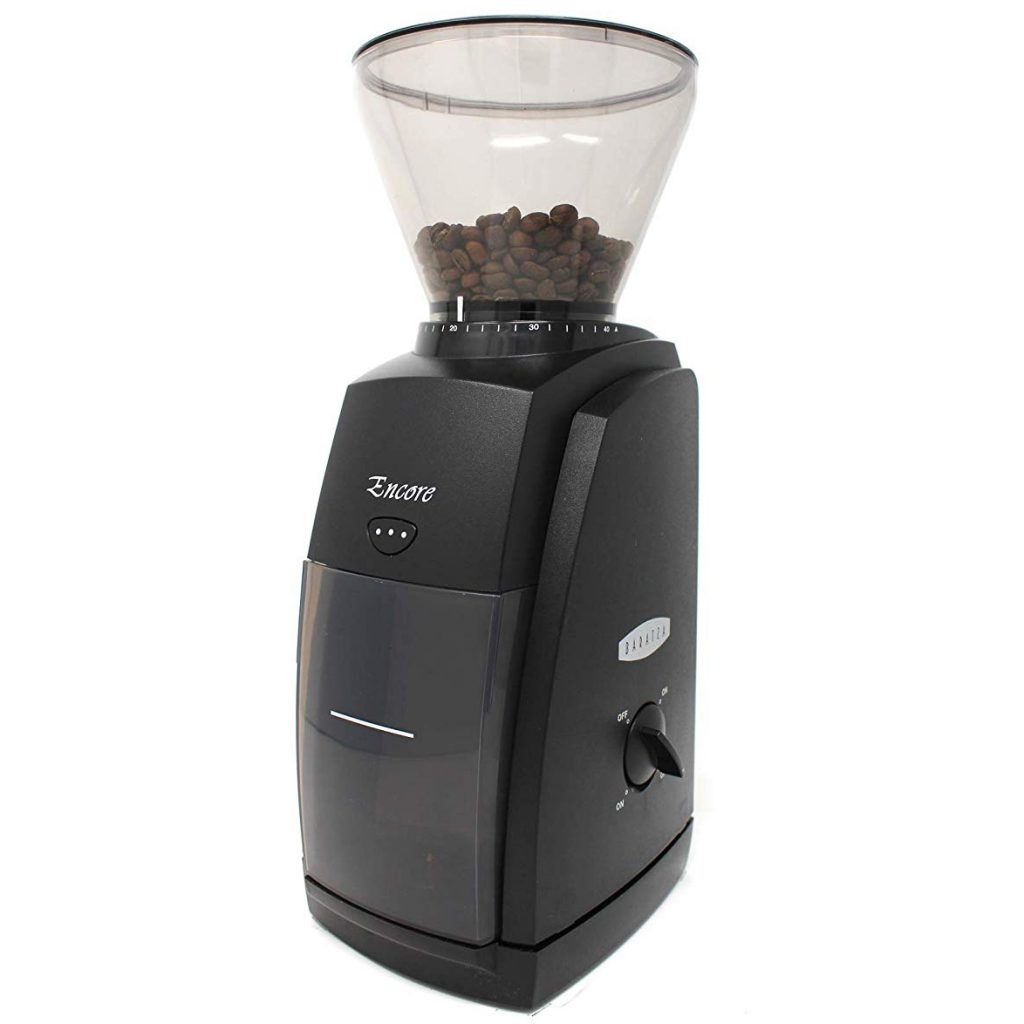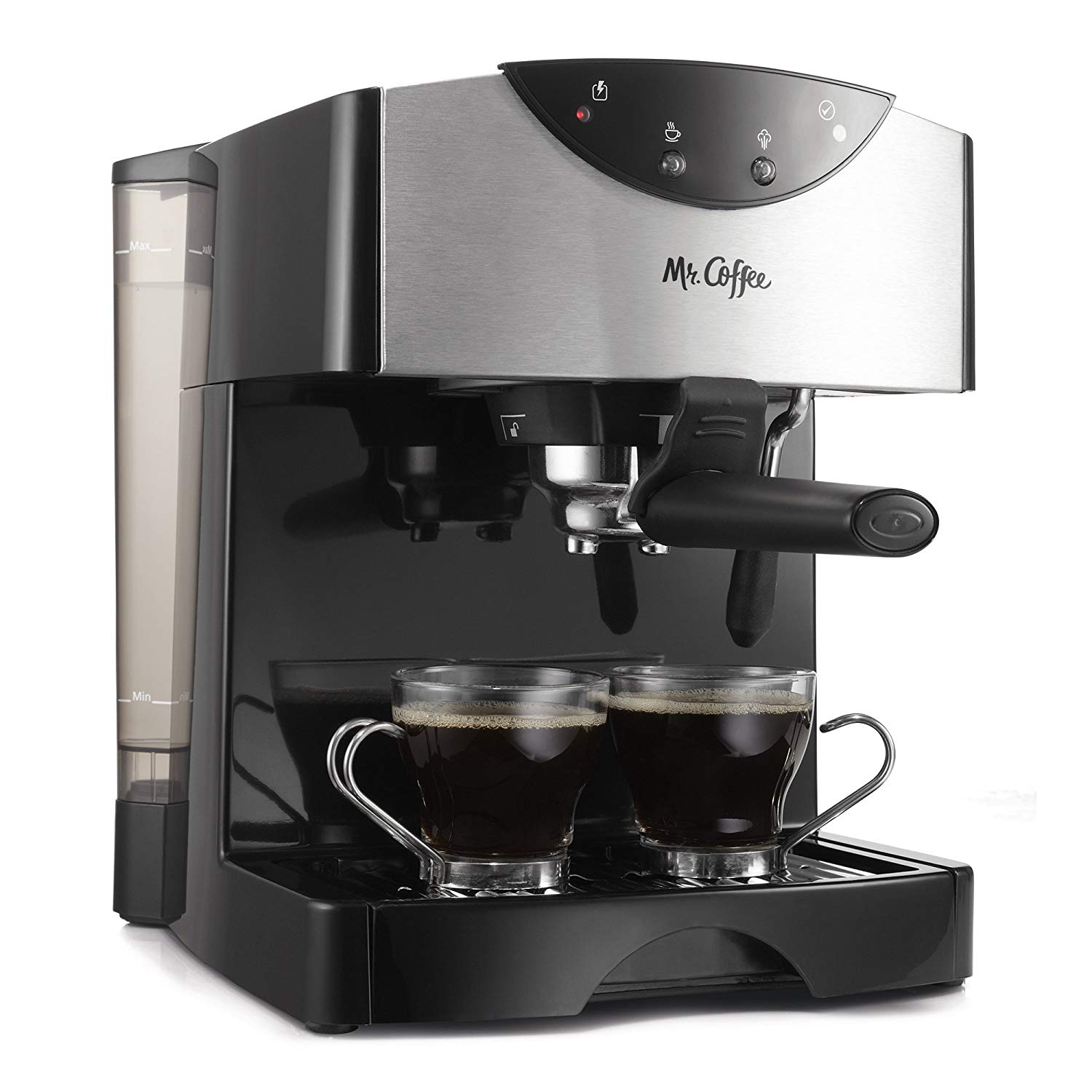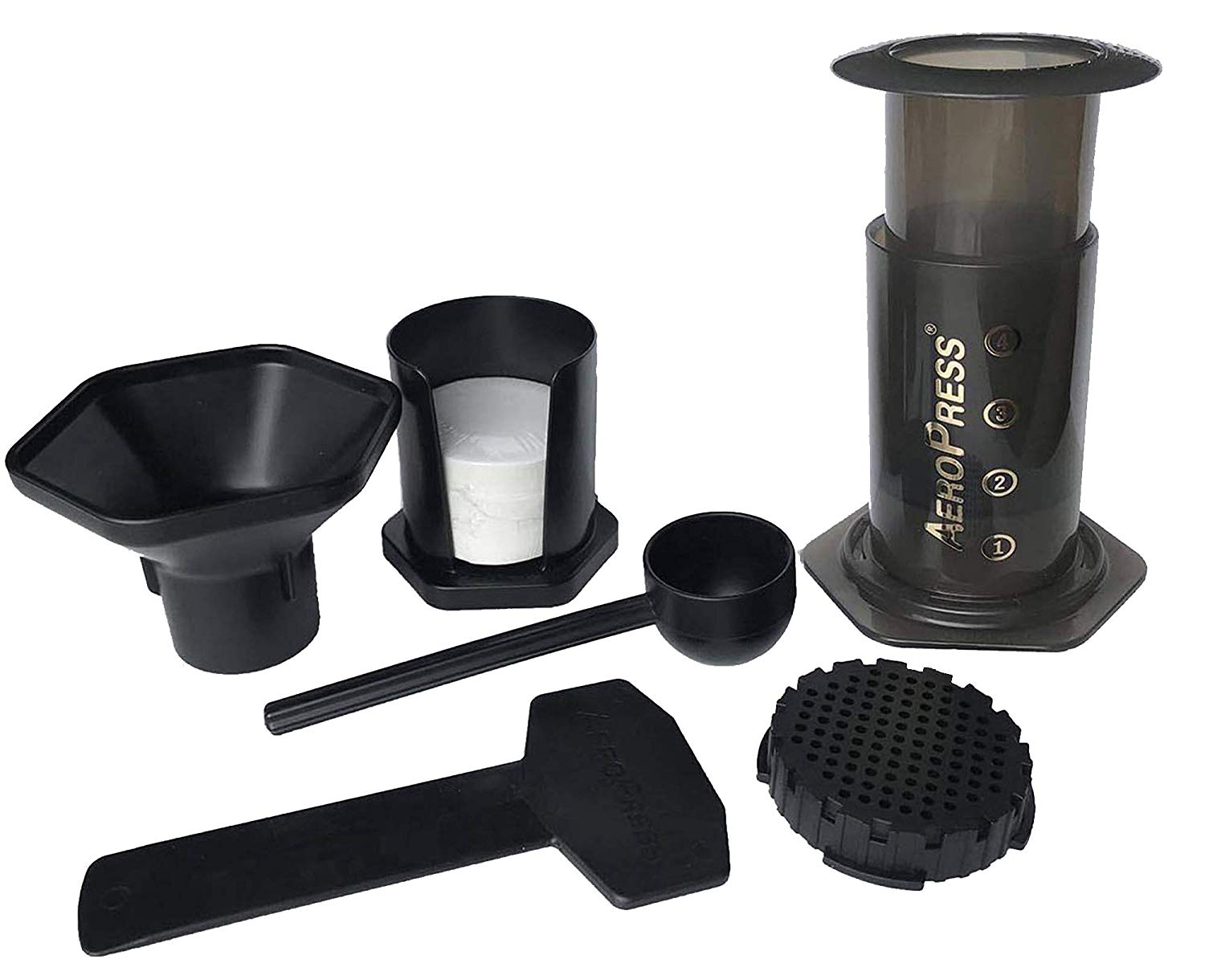Learning how to make a good espresso can take you to heaven, even if the process to make one looks like rocket science. Watching a barista expertly grind beans, pack multiple porta-filters simultaneously, twist countless nozzles and coax steam, hot liquids and frothed milk from the hundred alien spouts of the massive machine in the coffee shop is an impressive spectacle, to say the least.
But we’re going to let you in on a secret – learning how to make an espresso isn’t the Herculean task that many consider it to be.
The truth is that in order to make a perfectly fine espresso, you don’t necessarily need the barista or the expensive machinery. Of course that’s one way to make it, but if you’re just looking to learn how to make espresso at home, there are way more cheaper and less cumbersome ways to go about it. We’ll get into the different methods below – but first let’s start with an explanation.
Regular Coffee vs Espresso: What’s the Difference?
To the untrained observer coffee and espresso look pretty much like the same thing. After all, they’re both dark, bitter, intense and beautifully-smelling liquids, and espresso, after all, is a form of coffee. But the main difference between your everyday cup of coffee and learning how to make espresso comes down to the way in which it is prepared.
Many other methods of coffee production rely on steeping coffee grounds in water and so take a lot of time to prepare, while espressos are made relatively quickly using a specialized espresso machine.
The fineness of the grinds is also a distinction which sets espresso apart from other styles of coffee. Espresso grinds need to be extremely fine in order to restrict the flow of water and build up pressure which is used to produce the final product.
Which leads to the question, what exactly is the production process behind a great espresso?
Learning How to Make Espresso Starts with Espresso Beans
Like most styles of coffee, one of the most critical variables for obtaining a great final brew is the type of beans used. When it comes to creating an espresso this rule is doubly true. In fact, the type of beans used for espresso actually taste entirely distinct from those used in ordinary coffee.
It all has to do with the way in which the beans have been roasted. Coffee beans come in a varied of different roasts from light-roasted to medium-roasted to dark-roasted. These roasts will yield different colored coffee beans, with each distinct roast being more suited to a specific style of coffee.
Espresso beans will almost always be dark-roasted (you can tell by the sheen on the beans before they are ground). The reason for this has to do with the fact that dark roasted beans contain the lowest acidity and have the fullest body. Dark roasts help the beans to retain most of their natural oils, meaning their flavor profiles are much stronger and more robust.
The emulsification of these and other oils in the coffee is what produces the crema on top of the espresso. Crema, for the uninitiated, is the white and creamy head on top of the final shot, which is a hallmark of a fantastic espresso.
You can find espresso beans just about anywhere, but below we’ve included a list of some of our favourites:
Espresso Grind: How to Do It
Now that you’ve selected the exact type of bean you want to use, it’s time to get down to the business of creating an espresso. And like any act of creation, it’s going to require some tools in order to pull it off successfully.
The first step in learning how to make espresso is to transform those beans in grinds. And for that you will need a grinder. Now the exact type of grinder depends on your needs, proclivities and budget, but since we’re assuming you’re not going to have an entire warehouse to dedicate to cumbersome, specialized coffee equipment, we’re going to discuss fairly compact grinders.
Grinders by and large are distinguished in two main categories – blade and burr.
Blade grinders, as the name suggests, use blades to finely chop the beans into ever smaller pieces, while burr grinders utilize conical burrs and a static plate in order to crush beans into the desired grind. In terms of consistency and functionality, burr grinders almost always outperform blade grinders and so should be prioritized if you have the budget for them.
Again, the exact grinder you choose depends on your own needs, but here are some that we’ve found to be functional and effective:
While these grinders may seem like an unnecessary expense at first, they’re absolutely vital to achieving a fine enough grind for quality espresso.View them as an investment, especially if you’re serious about making coffee for years to come.
How to Make Espresso at Home: 4 Different Methods
You have your beans and you have your grinder, so how do you turn those into espresso? Luckily you have a number of different methods at your disposal when learning how to make espresso at home.
Espresso machine

Espresso machines work using extremely high pressure (between 7 and 10 bars) to rapidly push hot water through a tightly-packed “puck” of coffee. The flavor of the coffee is extracted swiftly and you’re able to enjoy the finished product in a matter of seconds.
Espresso machines tend to be a bit bigger and more expensive than other methods on this list; the reason being that they contain a lot more specialized parts than say, a moka pot or French press. That being said, you don’t have to blow your child’s entire college savings in order to purchase something halfway decent.
The Mr Coffee Automatic, for example, retails at $79 on Amazon, and is capable of producing hard-hitting espresso shots that hit lightly on the wallet.
For something a bit more upmarket, the DeLonghi Magnifica is a more complex machine capable of making multiple espressos at once, frothing milk, and also customizing precisely how you would like your espresso to be produced.
Moka Pot

The moka pot consists of a bottom chamber, a funnel and filter for holding coffee grinds, and the upper collection chamber where the finish coffee ends up. To make espresso using a moka pot, simply:
- Fill the bottom chamber with water.
- Pack the funnel and filter tightly with coffee then place over the water-filled chamber.
- Tamp the grinds down with a spoon or other blunt object.
- Screw the collection chamber on top of the filter, thus completing the moka pot.
- Place over a stove or flame and wait until you hear the coffee liquid begin to bubble up through the spout in the collection chamber.
- Once the chamber is filled, turn off the heat and allow the coffee to settle for a minute.
- You now have around six to eight shots of hot, delicious espresso.
The benefit of a moka pot is that they’re inexpensive, easy to clean as well as store when not in use, and they’re extremely durable. Investing in a decent model means you won’t have to buy another one for years to come. On top of that, the act of packing the moka pot and waiting for the coffee to brew is a very satisfying ritual that also fills the entire house with the smell of freshly-made coffee.
If you’re interested in getting your hands on one – a few of our favorite models are the Moka Express, Cuisinox Roma and Bellemain Stovetop.
French Press

Because the French press is usually used to make larger quantities of coffee, you’re going to have to tweak the usual process in order to adapt it to espresso production. The main difference in this regard is that you will be using roughly double the amount of coffee grinds that you normally would use with a French press. This will ensure that your coffee has the strong flavor and dark finish that espresso is renowned for.
Once you’ve got everything ready, simply follow these steps to make Espresso with a French Press:
- Ensure that your coffee is ground very finely.
A good rule of thumb is that you’ll need about two tablespoons of beans for every one cup of water that you use.
- Boil some water using a kettle and set it aside.
Remember that you want to use about double the amount that you normally would when making ordinary coffee.
- Add the coffee grounds into the French Press.
Remember that you want to use about double the amount that you normally would when making ordinary coffee.
- Add a couple of splashes of hot water to the grounds.
This will allow them to bloom and start the release of the coffee’s natural oils and aromas.
- Add the rest of your water to the French press and let it rest.
- Place the lid on top of the French press, but don’t put pressure on the plunger.
Simply let it rest there for about four minutes. The longer you leave it, the stronger the coffee will be, but it’s important not to leave it for too long or else you risk over-extracting it.
- Press the plunger down slowly and consistently all the way to the bottom of the glass.
Don’t rush this step; slow, even pressure is the name of the game here.
- In order to halt the extraction process, pour the coffee into a separate container.
- From here your French press-made espresso is ready to serve.
Enjoy!
If you’re not sure what French press to buy, check out some of the best on the market below:
AeroPress

That being said, it’s not a lost cause. With some finely ground coffee, an AeroPress and some decent muscle power, you’ll still be able to produce a satisfactory and delicious shot of coffee at home. It won’t be true espresso, but it’ll be close, and still worth it if you can’t get your hands on an espresso machine.
In order to make a quality AeroPress espresso, grind your beans extremely finely, add them to the AeroPress and add some hot water. The next step is the crucial one – in an attempt to mimic the workings of an espresso machine you’ll want to plunge the coffee as hard as possible to generate as much pressure as possible.
The result should be a shot of strong, dark and intense coffee – not 100% espresso, but not a bad alternative either. If you’re too strong for your own good, you’ll probably also have a little bit of mess on your hands.
If you don’t have one already, you can pick up this AeroPress here.



